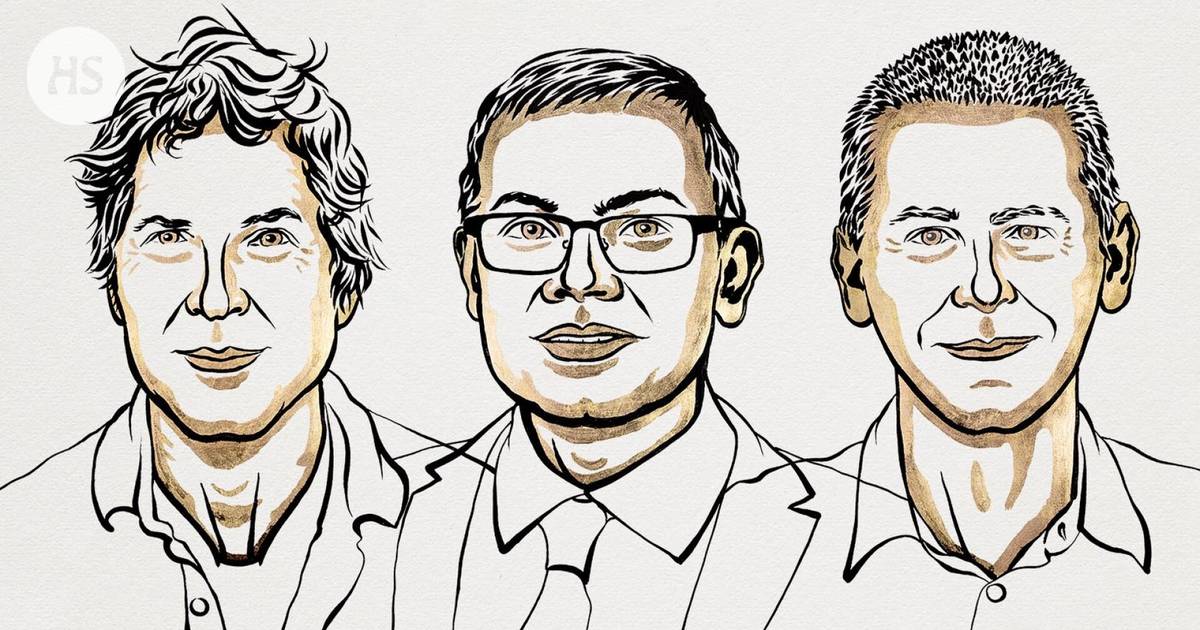The Nobel Prize|The laureates developed methods based on artificial intelligence and artificial intelligence with which the structures of proteins can be designed and studied with the help of computers.
The summary is made by artificial intelligence and checked by a human.
The 2024 Nobel Prize in Chemistry will be awarded to David Baker, Demis Hassabis and John M. Jumper.
David Baker studied the shape of proteins computationally and built completely new proteins.
Demis Hassabis and John M. Jumper developed the AI model Alphafold2. It can be used to predict protein structures. In 2020, Alphafold2 solved a 50-year-old problem in chemistry.
Medicines, enzymes or, for example, sensors can be built from proteins.
CHEMISTRY The Nobel Prize will be awarded in 2024 by three protein researchers. You get half of the prize David Baker. He has designed and studied the structures of proteins computationally.
They share the other half Demis Hassabis and John M. Jumper. Using artificial intelligence, they have developed ways to predict the structures of proteins.
The Royal Swedish Academy of Sciences and its experts decided on the Nobel Prize on Wednesday.
“It is fascinating that both chemistry and physical The Nobel Prizes 2024 were awarded specifically for the development of methods based on artificial intelligence and machine learning,” says Ilpo Vattulainen.
He is a professor of computational biological physics at the University of Helsinki.
“With new methods, it is possible to better understand how biomolecules produce the functions of life, and how malfunctions can be corrected with molecules designed for that purpose.”
David Baker has succeeded in the almost impossible. He has designed and built completely new types of proteins.
Demis Hassabis and John M. Jumper, on the other hand, have developed an artificial intelligence model that solved a 50-year-old problem.
It’s about predicting the complex structures of proteins with the help of computers and artificial intelligence.
Life the diversity testifies to the amazing abilities of proteins as chemical tools. Proteins control almost all of the chemical reactions that together form the basis of life. Countless proteins in our body also act as hormones, signal transmitters, antibodies and building blocks of various tissues.
One of the discoveries is related to the construction of proteins. The second concerns the realization of a 50-year-old dream.
Chemists had a dream of predicting protein structures. It can now be done from the amino acid sequences of proteins.
“Both discoveries offer enormous opportunities,” says the announcement Heiner Linke. He is the chairman of the Nobel Chemistry Committee.
Proteins usually consist of 20 different amino acids that can be described as the building blocks of life.
In 2003, Baker succeeded in using these blocks to design a new protein.
It was different from all known proteins. Since then, Baker and his team have been producing new, different and imaginative proteins time and time again.
Among them are proteins that can be used as medicines and vaccines. There are also proteins that can act as tiny nanomaterials and sensors.
Awarded another discovery concerns the prediction of protein structures.
In proteins, amino acids are joined together in long chains. They fold and thus form a three-dimensional structure. The structure is crucial for the function of the protein.
Chemists have been trying to predict protein structures since the 1970s. It is done by studying the sequences of amino acids.
This proved to be very difficult until the 2020s.
A breakthrough was made four years ago. In July 2020, AI researchers Demis Hassabis and John Jumper introduced an AI-based tool called Alphafold2.
With its help, it was possible to accurately predict the structure of 200 million proteins that the researchers had identified, but whose structure was not properly known.
The developers of Alphafold2 promised that any researcher can use the artificial intelligence.
A breakthrough since Alphafold2 has been used by more than two million people. They come from 190 countries.
It is in use Alphafold2:n grandsonand numerous scientific applications have been implemented with it.
Researchers now also understand antibiotic resistance better than before. Antibiotics are drugs used to treat bacterial infections.
Researchers can also create models of enzymes that can break down plastics, for example.
Knowing the structures of proteins offers humanity new ways to use them, says the Royal Swedish Academy of Sciences in the bulletin.
Award-winning David Baker was born in 1962 in Seattle, USA. He is a professor at the University of Washington in Seattle.
Demis Hassabis was born in 1976 in London, England. He is the head of artificial intelligence company Google Deepmind in London.
John Jumper was born 1985 in Little Rock, Arkansas. He is a researcher at the artificial intelligence company Google Deepmind in London.
Thursday In Stockholm, it will be announced who will receive the Nobel Prize for Literature. The winner of the Nobel Peace Prize will be announced on Friday in Oslo.
The value of the chemistry prize this year is 11 million Swedish kronor, or just under 970,000 euros. The three prize winners will share the amount.
